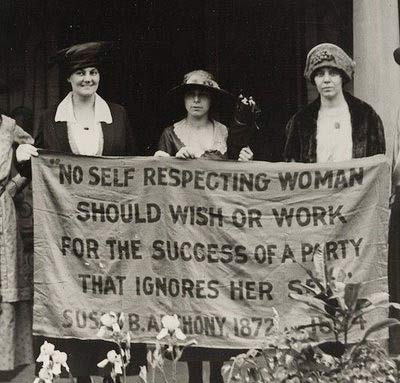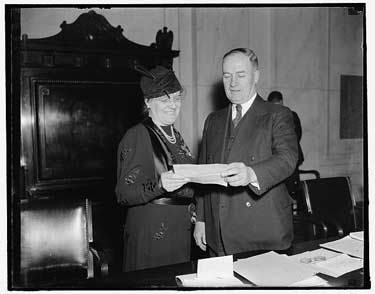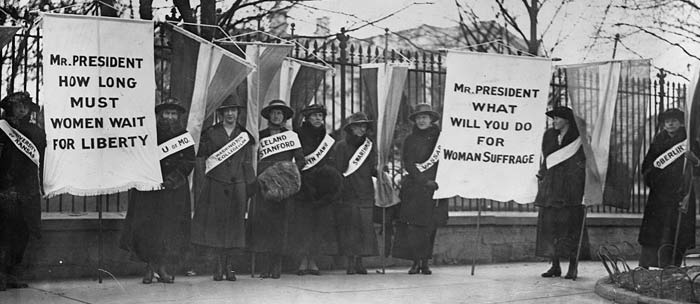by Carolyn A. Cook
Looking back now, my parents’ divorce was my first awakening to the double standard for women. Mom raised two daughters alone and re-entered the workforce as a nurse part-time for no benefits after twenty-plus years as a full-time homemaker/mother. We shopped thrift stores, clipped coupons and conserved utilities year-round.
Juxtapose this with two-week, annual visits where we enjoyed fabulous restaurants, fun-filled experiences, new clothes and no worries with my Dad. No fault of my dad’s, this was “justice served” by a male judge in divorce court in the 1980s. We were the kids outside the candy store window. Think much has changed? Think again.
As Ann Crittendon wrote in her 2001 book, The Price of Motherhood: Why the Most Important Job in the World is Still Least Valued, “Mothers in forty-seven of the fifty states — California, Louisiana, and New Mexico are the exceptions — do not have an unequivocal legal right to half of the family’s assets. Nor does a mother’s unpaid work entitle her to any ownership of the primary breadwinner’s income — either during marriage or after a divorce. Family income belongs solely to “he who earns it,” in the phrase coined by legal scholar Joan Williams. A married mother is a “dependent,” and a divorced mother is “given” what a judge decides she and the children “need” of the father’s future income. As a result, the spouse who principally cares for the children — and the children — are almost invariably worse off financially after divorce than the spouse who devotes all his energies to a career.”
| Only a constitutional amendment offers a lifetime guarantee |
Redefining her identity and inspired by Betty Friedan’s book, The Feminine Mystique, my mom debuted her homemade women’s liberation bumper stickers on our car, abandoned Catholicism for continuing to ban the ordination of women, marched with my sister for the Equal Rights Amendment (ERA) in 1978 and wrote a divorce policy recommendation that resides in the Gerald Ford presidential library.
After a series of political awakenings and a presidential campaign, I, too, came to regard equal legal rights for women under our constitution as essential. It has become my life’s mission, leading me to develop a new strategy about how it can be achieved.
Under the Equal Rights Amendment, any government policy, law or practice that negatively impacts one sex over another would not be tolerated. Instead it would be revised to extend benefits equally to both sexes. Social security for homemakers and equal pay for equal work, as examples, would be upheld under the ERA.
Working Through the Work World
My mom’s example taught me the importance of empowering women and girls. After college, I mentored an at-risk girl through the Big Sister program. I designed a life skills camp for adolescent girls and went on to establish a bi-weekly women’s circle that has enriched our lives for nearly a decade.
In my former position in Work/Life initiatives at the Discovery Channel, I was struck by a common thread among the stories of working women. Each strived to be Super Employee, Mom and Wife and felt guilty, frustrated and exhausted with no support. Government, business and families each benefit from women’s full participation in society. Therefore, it is critical to formalize public policies that guarantee working adults: equal pay for equal work; flexible work schedules; paid sick and family medical leave; paid parental leave for birth and adoption and affordable child and after school care. But this requires a catalyst for bringing these issues to the forefront. That catalyst is the ERA.

ERA is gender-neutral, so it protects both women and men from sex discrimination. It is the “trigger” necessary for mainstreaming these so-called “women’s issues” into public policy priorities to improve the quality of life for men, women and children.
While at Discovery, I was a happy, single person: no children, no debt and no worries. I rented an apartment in a swanky neighborhood and enjoyed my carefree lifestyle. That is, until my paycheck, friendships and identity came to a screeching halt in a massive corporate layoff. Stunned and uncertain as to how to “reinvent myself,” much like my mom felt after my dad left, I vowed that chasing someone else’s dream would no longer trump my own.
Well, that lasted until Senator Hillary Clinton swept me up in the excitement of electing the first, fabulous woman president after 43 male predecessors.
As supporters of Hillary, we were largely ignored or dismissed by the media. I was appalled by the sexism and misogyny of the pundits which was poignantly captured by the Women’s Media Center’s post-election video Sexism Sells—But We Aren’t Buying It. The media continually reinforces women’s second-class status, whether in politics, business or pop culture offerings. Is it really a shock that men are 83 percent of Congress, 97 percent of Fortune 500 CEOs and six of nine Supreme Court Justices? Tokenism is not equality. The impact of a male-centric view of the world is that the perspectives and contributions of women are missing. Whether intentional or not, the cost to social progress has been tremendous.
I have no doubt that President Hillary Clinton would have produced monumental change for our country. But instead, Hillary was undermined and degraded daily for daring to step out of the gender box. I recalled my own experiences of being put down for being: too tall (for a girl), too fast of a runner (for a girl), not dressing sexy enough (for a girl) or too outspoken on sexist remarks (for a girl). Just who had been allowed to define what I could and could not do? What happened to my life, liberty and the pursuit of happiness when I was “expected” to be someone other than me.
Re-experiencing the wounds of a double standard, I could no longer turn the other cheek and ignore my second-class citizenship. Sex discrimination is no less abhorrent than race discrimination. Yet only race is protected by the full extent of the law — the U.S. Constitution.
Every woman of every race, age, class, orientation and ability must live with dignity and respect under the law. Today.
Equal Rights for All
The Equal Rights Amendment was originally written in 1923 by Alice Paul, a republican lawyer and celebrated suffragist.

The text of the ERA is simple:
“Equality of rights under the law shall not be denied or abridged by the United States or by any State on account of sex. The Congress shall have the power to enforce, by appropriate legislation, the provisions of this article. This amendment shall take effect two years after the date of ratification.”
The ERA was adopted by the Republican Party platform in 1940 and the Democratic Party in 1944. In 1972, the Equal Rights Amendment successfully passed by an overwhelming two-thirds majority of Congress and was sent to the states for ratification. In ten years, the ERA was ratified by 92 percent of the states required for completion. However, Congress had imposed an arbitrary time limit on this human rights amendment, and on June 30, 1982, the ERA “expired” just three states short of victory.
Considering that it took 72 years for women to secure the single right of suffrage under the 19th Amendment, a mere 10 years to secure every other right under law was doomed to fail.
I became the DC Coordinator for the ERA Campaign Network. In 2009, I followed six states’ efforts (MO, AR, FL, LA, IL and NV) to re-introduce the ERA, only for them to be defeated by special interests once again.
Currently, many women’s rights are determined at the state level versus a nationwide “blanket of protection.” Laws are no substitute. They take years to enact and can be repealed overnight by Congress or undermined by the President. Furthermore, in court, without having the strict scrutiny standard applied to cases of sex discrimination, the burden of proof lies with the plaintiff to prove she was victimized. Once sex becomes a protected classification under the U.S. Constitution (like race, religion and national origin), the burden of proof moves to the defendant. This will have a profound impact on attitudes and outcomes.
Only a constitutional amendment offers the lifetime guarantee of protection across all 50 states. Consider ERA like signing a marriage contract with our government, only it’s next to impossible to ignore or annul!
There are currently three suggested paths for the ERA:
1)Start All Over Again With No Time Limit: A new constitutional amendment was championed by Congresswoman Carolyn Maloney (D-NY) in 2009. It contains the exact wording of the 1972 Equal Rights Amendment, but with no deadline for ratification in the resolving clause. Constitutional amendments require two-thirds of the House and Senate to vote “Yes” and 38 states to vote “Yes” before adoption. But when the ERA already achieved two-thirds majorities in both Houses of Congress and fulfilled 92 percent of its constitutional requirements, why should ERA advocates who represent the majority opinion forfeit what was already won to start all over again?
2)Three-State Strategy: Many Americans are unaware that the 27th “Madison Amendment,” written in 1789 had gone missing and was ratified over two centuries later in 1992. Graduates of the T.C. Williams School of Law in Richmond, Virginia has published a legal analysis, discussing the implications of the “Madison Amendment” for ERA’s continuation in just three more states. Their analysis became known as the Three-State Strategy and is championed by Congressman Robert Andrews (D-NJ). Andrews suggests that if three new states ratified the ERA for a grand total of 38 states, the ERA would fulfill its requirements for the House of Representatives to accept this amendment. However, this approach sidesteps the inevitable challenge facing the not-yet-ratified states about whether the arbitrarily imposed deadline bars new state ratifications of ERA today.
3) Don’t Hit the Reset Button; Remove the Time Limit: United for Equality, LLC, is spearheading an exciting alternative to these two congressional proposals, based upon research and lessons learned from ERA advocates in not-yet-ratified states. The “Let’s Finish What We Started” strategy assumes that the original 1972 Equal Rights Amendment remains before the states today and that in order to complete ERA’s ratification, concurrent resolutions would be introduced in both Houses that remove any perceived time barrier from ERA’s passage in three more states. This proposal outlines key arguments supporting the time limit’s removal and includes a “report card” on the status of women 30 years after ERA “expired.” It concludes that continuous efforts to reintroduce ERA, in spite of Congress’s deadline of 1982, prove that ending sex discrimination remains a timely and critical issue for our government to resolve. The basis of our citizen-initiated resolution to remove ERA’s time limit is that a human being’s right to equality does not expire in a democracy. Fifty-two percent of our country will remain second-class citizens until the ERA is passed. The time has come to get this done.

To prepare for launching our nationwide campaign, I founded the social justice enterprise, United for Equality, LLC (U4E). This umbrella organization is 100 percent powered by passionate women and men committed to ratifying the ERA by 2015. Phase I will remove the time limit for the passage of the Equal Rights Amendment. Phase II will pursue final ratification in the three remaining states.
| Success will be the celebration of our unique talents free of harmful stereotypes, |
The potential value of the Equal Rights Amendment is undeniable. In 1981, the U.S. Commission on Civil Rights, an independent, bi-partisan agency established by Congress, wrote a report, The Equal Rights Amendment: Guaranteeing Equal Rights for Women Under The Constitution, which concluded that the attainment of full, equal rights for women and men requires ratification of the Equal Rights Amendment. It said:
“The social and economic cost to our society, as well as the individual psychological impact of sex discrimination, is immeasurable. That a majority of our population [women] should be subjected to the indignities and limitations of second class citizenship is a fundamental affront to personal human liberty…
Ratification of the Equal Rights Amendment will provide a durable guarantee to women and men of equal status and dignity under the law. It will allow us [citizens] to live and develop free from the government intrusion that historically has classified and pigeonholed men and women according to stereotypes about their roles and capabilities.”
Success will be the celebration of our unique talents, capabilities and perspectives — as individuals of one human race – free of harmful and limiting stereotypes. Equality is the ultimate freedom of every individual to create a life of one’s own choosing. United for Equality, we will achieve Justice for All.
Carolyn Cook is an innovative social strategist with a background in Communications, Human Resources and Work/Life initiatives. She recently founded, United For Equality, LLC, solely dedicated to ratifying the Equal Rights Amendment by 2015. U4E’s team has been working on an entirely pro-bono basis. Savvy, social investors and individuals concerned about equality can help U4E continue working on this exciting initiative with our “BUCK THE SYSTEM for ERA!” campaign to End Women and Girl’s 2d Class Status by contacting United For Equality, LLC, PO Box 42606, Washington, DC 20015 or [email protected]; follow on Twitter and facebook.com/UnitedForEquality.
Also see “Equal Rights Amendment Still Brings Out Ranters” by Jennifer S. Macleod in the Spring 2009 edition of On The Issues Magazine.
See Gender Equality: Devil in the Details by Cindy Cooper in this edition of On The Issues Magazine.
Visit The Café of On The Issues Magazine for new stories and updates.
